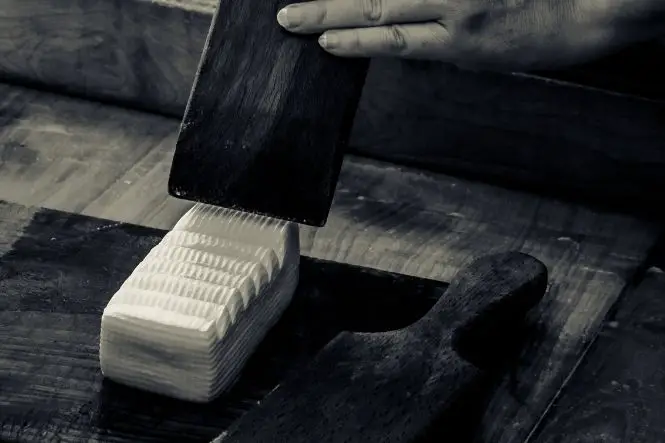Chemistry uses chromatography to separate mixtures of chemicals. The word chromatography comes from the Greek words for ‘colour’ and ‘to write’.
Paper chromatography is a simple form of chromatography, and can separate out the mixtures of different pigments and dyes in black and coloured inks and in food colourings.
Separating Colours Using Paper Chromatography
Put a little water in the bottom of a jar. Cut a piece of absorbent paper, such as blotting paper, paper tissue, kitchen roll or coffee filter, about 2 cm wide and taller than the jar. Using a coloured pen, draw a spot of colour at the bottom of the paper, so that it will be just above the water, or drop a small dot of food colouring on the paper. Fold over the top edge of the paper and balance a pencil or toothpick over the jar to hook the paper so that the bottom will just rest in the water, or clip two paperclips to the edge of the paper so that the paper just hangs in the water.
Hang the paper in the jar – the water (called the solvent in chromatography) will travel up the paper, using capillary action. The water carries different colours of ink up to different levels. The parts of the ink that do not dissolve as well in the water (not as water soluble) will stop first, and the parts that are more water soluble will carry on further. Larger molecules will stop earlier than smaller molecules.
What colours are different inks made from, and do the colours travel the same distance every time? Try doing the experiment again to see.
Do different makes of the same original colour pen or food colouring all produce the same range of colours? Try using a number of different makes of black pens.
Do any colours not separate at all? This might be because they are not water-soluble– try it again using methylated spirits or surgical spirit. Methylated spirits and surgical spirit both contain an alcohol called ethanol, with ingredients in that make it undrinkable. Be careful with these. Some colours, such as yellow, might only be made of one dye or pigment, and so they might move but not separate. Paper chromatography only separates out pigments and dyes – some black inks, like India ink, are made of small particles of carbon black mixed into water and so these won’t separate.
Get someone to write on a piece of blotting paper using one of the black pens already tested and try to identify which one it is using chromatography.
What are the Uses of Chromatography?
In paper chromatography, the paper is called the ‘stationary phase’ and the water the ‘mobile phase’. Different kinds of chromatography use different solids for the stationary phase, and different liquids and gases for the mobile phase.
Scientists use chromatography to purify the parts of a mixture (this is called ‘preparation chromatography), or to identify the different parts of the mixture (this is called ‘analytical chromatography). Analytical chemistry can identify pollutants in water or drugs in people’s blood or urine.






